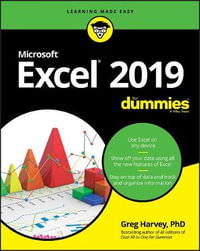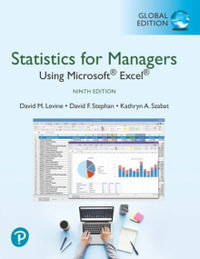| Preface | p. xi |
| Introduction | p. 1 |
| Selecting Special Cells | p. 1 |
| Setting a Chart's Data Point Labels | p. 3 |
| Topics in Learning Excel Programming | p. 4 |
| The VBA Environment | |
| Preliminaries | p. 9 |
| What Is a Programming Language? | p. 9 |
| Programming Style | p. 11 |
| The Visual Basic Editor, Part I | p. 16 |
| The Project Window | p. 16 |
| The Properties Window | p. 21 |
| The Code Window | p. 21 |
| The Immediate Window | p. 25 |
| Arranging Windows | p. 26 |
| The Visual Basic Editor, Part II | p. 28 |
| Navigating the IDE | p. 28 |
| Getting Help | p. 29 |
| Creating a Procedure | p. 30 |
| Run Time, Design Time, and Break Mode | p. 31 |
| Errors | p. 32 |
| Debugging | p. 36 |
| Macros | p. 42 |
| The VBA Programming Language | |
| Variables, Data Types, and Constants | p. 47 |
| Comments | p. 47 |
| Line Continuation | p. 47 |
| Constants | p. 48 |
| Variables and Data Types | p. 51 |
| VBA Operators | p. 68 |
| Functions and Subroutines | p. 69 |
| Calling Functions | p. 69 |
| Calling Subroutines | p. 70 |
| Parameters and Arguments | p. 71 |
| Exiting a Procedure | p. 75 |
| Public and Private Procedures | p. 76 |
| Project References | p. 76 |
| Built-in Functions and Statements | p. 78 |
| The MsgBox Function | p. 79 |
| The InputBox Function | p. 81 |
| VBA String Functions | p. 82 |
| Miscellaneous Functions and Statements | p. 85 |
| Handling Errors in Code | p. 88 |
| Control Statements | p. 93 |
| The If...Then Statement | p. 93 |
| The For Loop | p. 94 |
| The For Each Loop | p. 96 |
| The Do Loop | p. 96 |
| The Select Case Statement | p. 97 |
| A Final Note on VBA | p. 98 |
| Excel Applications and the Excel Object Model | |
| Object Models | p. 103 |
| Objects, Properties, and Methods | p. 103 |
| Collection Objects | p. 104 |
| Object Model Hierarchies | p. 107 |
| Object Model Syntax | p. 107 |
| Object Variables | p. 109 |
| Excel Applications | p. 115 |
| Providing Access to an Application's Features | p. 116 |
| Where to Store an Application | p. 120 |
| An Example Add-In | p. 128 |
| Excel Events | p. 132 |
| The EnableEvents Property | p. 132 |
| Events and the Excel Object Model | p. 133 |
| Accessing an Event Procedure | p. 133 |
| Worksheet Events | p. 134 |
| WorkBook Events | p. 134 |
| Chart Events | p. 135 |
| Application Events | p. 136 |
| QueryTable Refresh Events | p. 138 |
| Custom Menus and Toolbars | p. 139 |
| Menus and Toolbars: An Overview | p. 139 |
| The CommandBars Collection | p. 142 |
| Creating a New Menu Bar or Toolbar | p. 143 |
| Command-Bar Controls | p. 144 |
| Built-in Command-Bar-Control IDs | p. 147 |
| Example: Creating a Menu | p. 149 |
| Example: Creating a Toolbar | p. 150 |
| Example: Adding an Item to an Existing Menu | p. 152 |
| Augmenting the SRXUtils Application | p. 153 |
| Built-In Dialog Boxes | p. 162 |
| The Show Method | p. 165 |
| Custom Dialog Boxes | p. 167 |
| What Is a UserForm Object? | p. 167 |
| Creating a UserForm Object | p. 168 |
| ActiveX Controls | p. 169 |
| Adding UserForm Code | p. 169 |
| Excel's Standard Controls | p. 171 |
| Example: The ActivateSheet Utility | p. 173 |
| ActiveX Controls on Worksheets | p. 178 |
| The Excel Object Model | p. 183 |
| A Perspective on the Excel Object Model | p. 183 |
| Excel Enums | p. 186 |
| The VBA Object Browser | p. 189 |
| The Application Object | p. 191 |
| Properties and Methods of the Application Object | p. 194 |
| Children of the Application Object | p. 219 |
| The Workbook Object | p. 224 |
| The Workbooks Collection | p. 224 |
| The Workbook Object | p. 230 |
| Children of the Workbook Object | p. 238 |
| Example: Sorting Sheets in a Workbook | p. 241 |
| The Worksheet Object | p. 243 |
| Properties and Methods of the Worksheet Object | p. 243 |
| Children of the Worksheet Object | p. 251 |
| Protection in Excel XP | p. 255 |
| Example: Printing Sheets | p. 257 |
| The Range Object | p. 263 |
| The Range Object as a Collection | p. 265 |
| Defining a Range Object | p. 266 |
| Additional Members of the Range Object | p. 272 |
| Children of the Range Object | p. 303 |
| Example: Getting the Used Range | p. 317 |
| Example: Selecting Special Cells | p. 319 |
| Pivot Tables | p. 332 |
| Pivot Tables | p. 332 |
| The PivotTable Wizard | p. 335 |
| The PivotTableWizard Method | p. 339 |
| The PivotTable Object | p. 341 |
| Properties and Methods of the PivotTable Object | p. 347 |
| Children of the PivotTable Object | p. 362 |
| The PivotField Object | p. 362 |
| The PivotCache Object | p. 379 |
| The PivotItem Object | p. 380 |
| PivotCell and PivotItemList Objects | p. 385 |
| Calculated Items and Calculated Fields | p. 389 |
| Example: Printing Pivot Tables | p. 391 |
| The Chart Object | p. 397 |
| Chart Objects and ChartObject Objects | p. 397 |
| Creating a Chart | p. 399 |
| Chart Types | p. 405 |
| Children of the Chart Object | p. 409 |
| The Axes Collection | p. 410 |
| The Axis Object | p. 413 |
| The ChartArea Object | p. 424 |
| The ChartGroup Object | p. 425 |
| The ChartTitle Object | p. 429 |
| The DataTable Object | p. 430 |
| The Floor Object | p. 430 |
| The Legend Object | p. 431 |
| The PageSetup Object | p. 433 |
| The PlotArea Object | p. 433 |
| The Series Object | p. 434 |
| Properties and Methods of the Chart Object | p. 441 |
| Example: Scrolling Through Chart Types | p. 446 |
| Example: Printing Embedded Charts | p. 449 |
| Example: Setting Data Series Labels | p. 454 |
| Smart Tags | p. 463 |
| What Are Smart Tags? | p. 463 |
| Smart TagRecognizer Object | p. 464 |
| SmartTag Object | p. 465 |
| SmartTagAction Object | p. 466 |
| SmartTagOptions Object | p. 466 |
| Appendixes | |
| The Shape Object | p. 471 |
| Getting the Installed Printers | p. 484 |
| Command Bar Controls | p. 488 |
| Face IDs | p. 499 |
| Programming Excelfrom Another Application | p. 505 |
| High-Level and Low-Level Languages | p. 510 |
| New Objects in Excel XP | p. 520 |
| Index | p. 535 |
| Table of Contents provided by Syndetics. All Rights Reserved. |
























